This portfolio brings together the understandings I have gathered over the past years of studying architecture. While architecture is often praised as a self-standing act of creation, what has influenced me most is discovering how the existing speaks — and how it can be revealed, reimagined, and brought into creation in a way that invites people to interact, to participate, and to become part of something larger.
This way of seeing was not necessarily taught from the beginning, yet working with what already exists has continually inspired and shaped me. Over time, the meaning of the existing has changed — sometimes a physical context, sometimes a memory, a story, or a trace of what once was. Learning to read the existing, both in a site and within myself as part of that site, has opened new ways of interaction and helped me better define and redefine my role as an architect.
The projects in this portfolio reflect this ongoing dialogue. Some engage directly with the built environment, others explore the existing through memory, fiction, or forgotten narratives that still linger in a place. At times, the existing asks to be built upon and given new life; at other times, it simply asks to be seen.
This constant conversation shapes my approach and the methods of creation I choose — expressed through architectural projects, concepts, illustrations, and booklets. They are all methods that invite re-creation — from those who experience them, and from those who, like me, continue to listen to what already exists.
This portfolio, imperfect, attempts to start another conversation.
Prof. Daniel Hülseweg, HSW Wismar
Prof. Adela Bravo Sauras, TU Berlin
Prof. Silke Flaßnöcker, HSW Wismar
Prof. Arnd Florian Hennemeyer, HSW
Prof. Ruben Jodar, HSW Wismar
Prof. Simon Takaskaki, HSW Wismar
Prof. Florian Ngaler, TUM München
Prof. Sophia Martineck, HSW Wismar
Prof. Sophia Martineck, HSW Wismar
Prof. Gunda Förster, HSW Wismar
PUTBUS TEMPORARY THEATRE
THEATRE OF OBJECTS
SUPER RESOURCES
COMMON BRUNNEN
STAMPING PRISHTINA
ABCTRACT INVISIBLES
THANK YOU FOR THE INSPIRATION


GUIDING THE TRANSITION Palace of Youth and Sports in Prishtina
adaptive re-use adaptable framework for future use

This project investigates the Palace of Youth and Sports, a massive Yugoslav-era landmark that has lost its relevance despite its central position in the city. Its deterioration—most visibly in the burned and abandoned hall now used as a parking lot—signals a broader fracture in Prishtina’s shared memory and urban identity.
Through the analytical research methodology, the project it engages the building’s accumulated layers of use, abandonment, and conflict. Inspired by Peter Brook’s notion of “Immediate Theatre,” the site is treated as a living stage where overlapping histories remain active. The approach moves between observation and personal connection, allowing the building’s unresolved narratives to surface rather than be replaced.
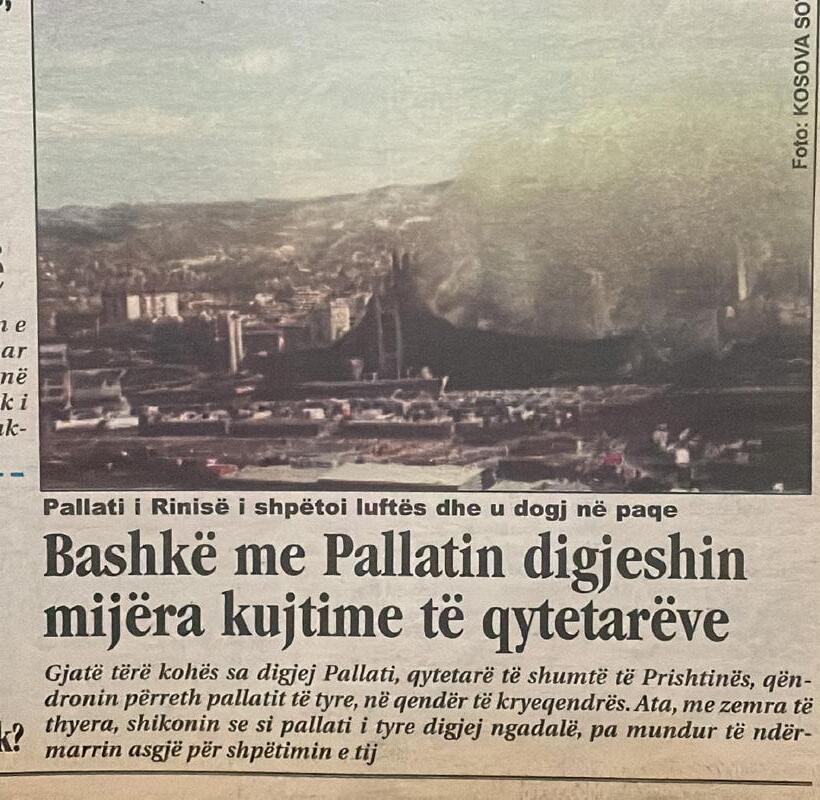
Shifting the researcher from observer to participant, interaction became a tool to unpack the site’s social and spatial layers.
Conversations with architects, planners, cultural workers, artists, and long-term employees helped connect personal engagement to shared professional memory. A participatory survey—distributed online and through QR-coded posters—gathered over 120 responses in under two weeks. Alongside rating the building’s importance (with 75 giving it 5/5), participants submitted numerous personal memories, revealing how



strongly they continue to hold on to its past. When envisioning its future, most pointed back to its original roles in Sports, Culture, and Education.
The findings confirmed that memory is not a constraint but an active design material—anchoring the building socially and emotionally while shaping possibilities for intervention.
For spaces so saturated with memory is the introduction of new functions something that invites engagement or does it risk resistance?

The strategy uses architectural insertions called ENABLERS to create an open-ended scenography—an adaptive framework that invites re-creation from its users. Key enablers include a Production Spine of workshops and Storage Spaces located beneath existing tribunes, providing the infrastructure necessary for continuous, in-house transformation and empowering users to become active participants in shaping the venue’s ongoing narrative. By embracing the unfinished and the adaptable, the project ensures the building remains a relevant cultural anchor and a site for collective reflection in the constantly evolving urban fabric of Prishtina
a commercial
b sports
c administrative
d national theatre
e existing circulation
f privately rented mixed-use
h technical i added circulation j private theater k public urban space
l toilets
m art gallery
n storage
o ‘stitching’ spaces
p parking
q workshops
r cafe/gallery
s creative studios
1 working with the diverse existing programmes
2 the damaged part as the main focus
3 repairing _ adding circulation and sanitary facilities
4 adding new functions, expanding existing functions
5 a new scheme of existing and additions
6 possibilities for future expansion

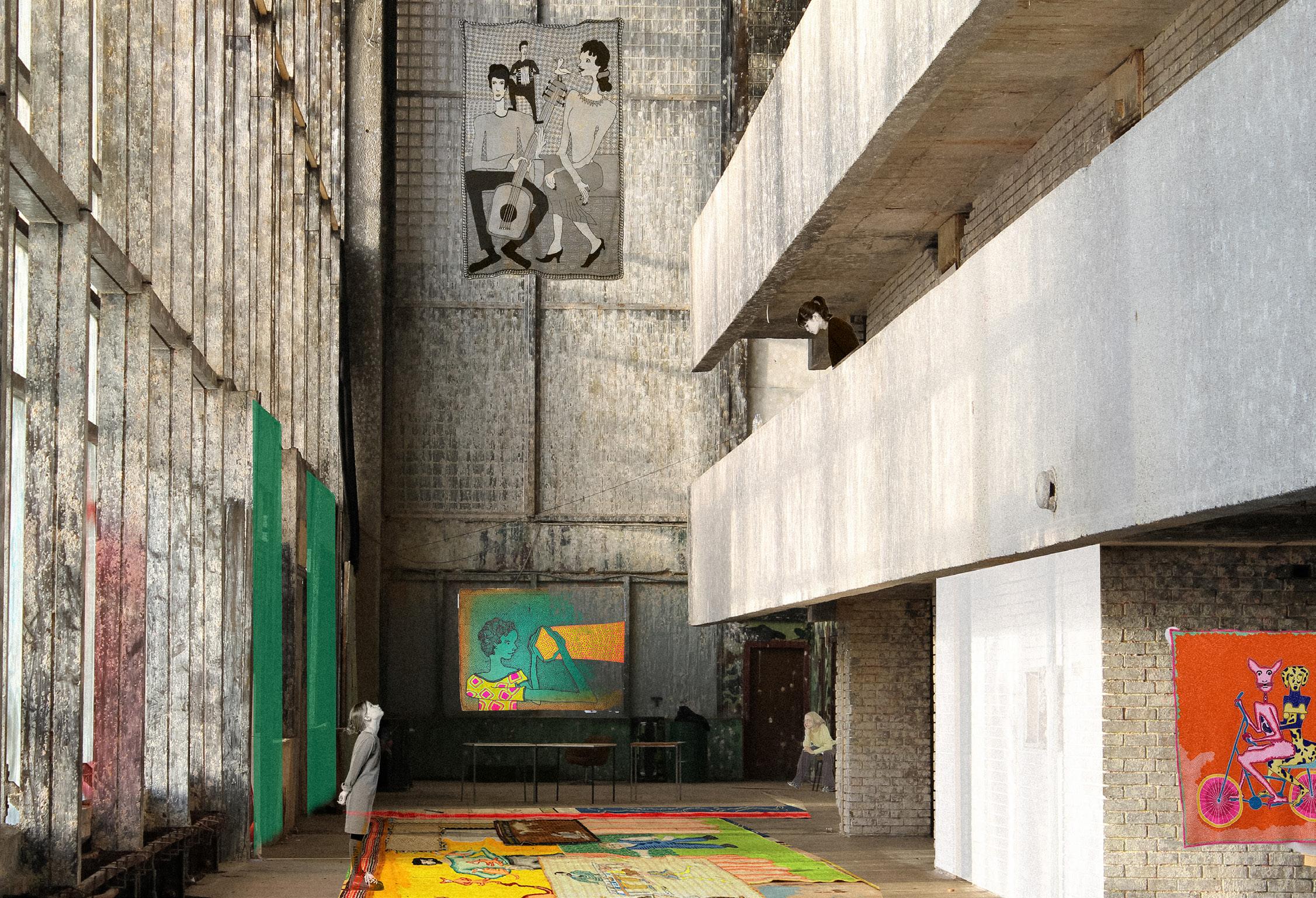
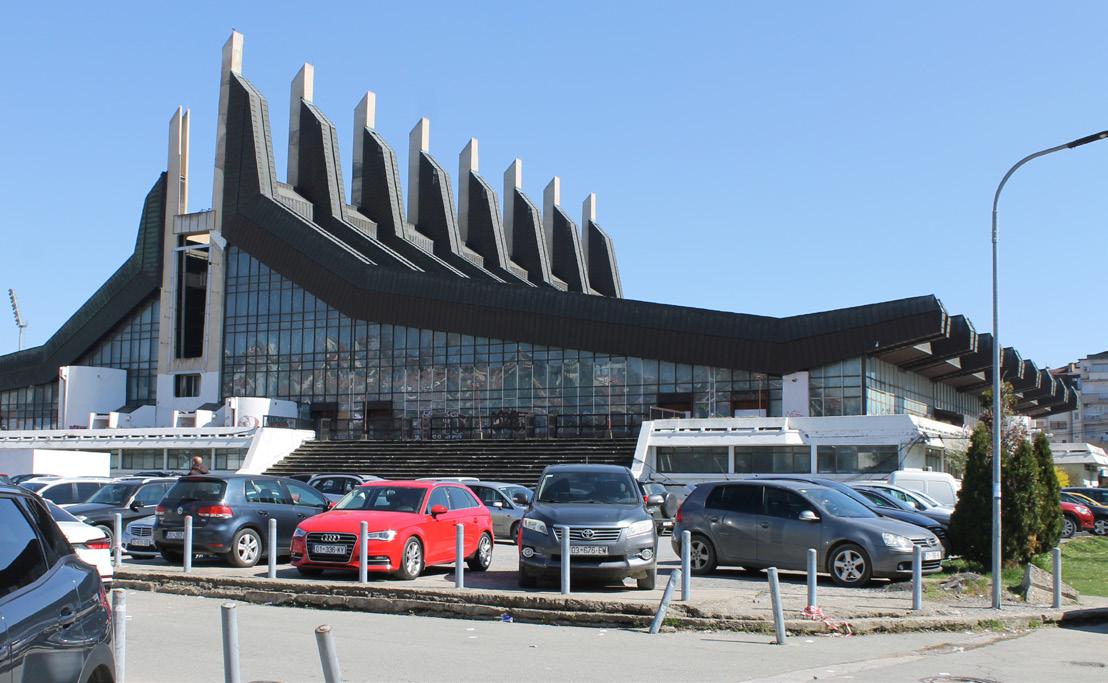


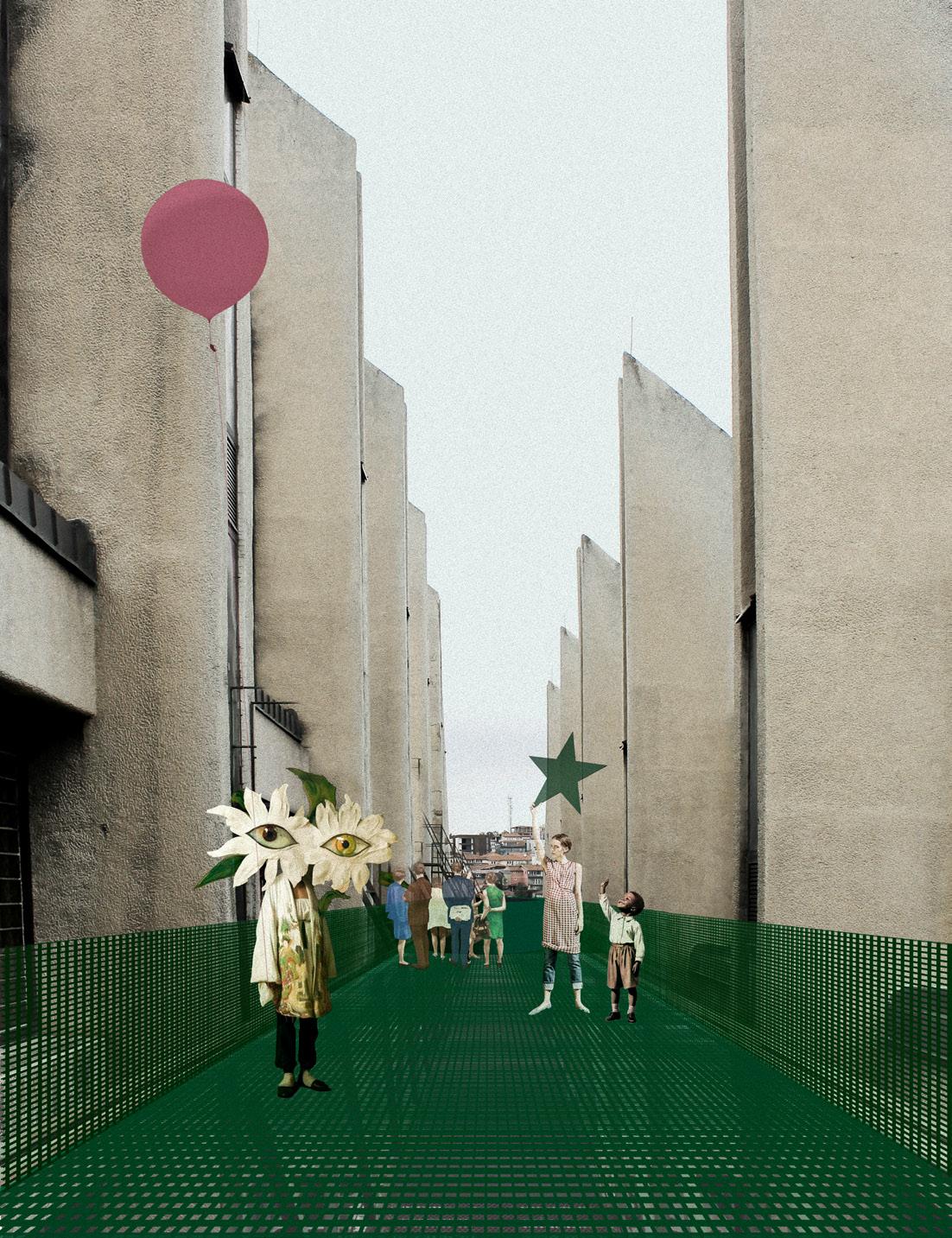



This project explores the potential of a temporary theater as more than a conventional typology. Designed to be used biennially for two weeks during summer performances, the structure can be dismantled and recombined into different configurations, offering multiple uses throughout the year.
Inspired by stories of the Putbus Castle — where demolished materials were repurposed by the local community — the theater modules are conceived to be flexible, spreading across the site like fragments of memory. When assembled, they host performances; at other times, they form pavilions and communal spaces that invite exploration and interaction.
By reinterpreting history and existing narratives, the project transforms both the physical and cultural landscape of the island of Rügen. The theater becomes a structure of imagination and discovery, continuously changing and revealing new possibilities for engagement with its users.

The Diemerstein Fabrication and Research Hall by T-Lab (RPTU Kaiserslautern-Landau) informed the structural and conceptual foundation of Putbus Temporary Theater. Its modular timber system, reversible compreg joints, and circular design principles demonstrate how architecture can adapt, evolve, and be reconfigured over time.
Putbus Temporary Theater builds on these ideas by translating structural reversibility into a spatial and performative concept. The theater’s modules can be rearranged to create ever-changing configurations—reflecting both the fluid nature of performance and the potential of adaptable architecture to continually reinvent itself.
The project proposal was awarded the 1st Prize in a student design competition at Wismar University of Applied Sciences for its innovative concept and sensitive engagement with the site’s historical context.


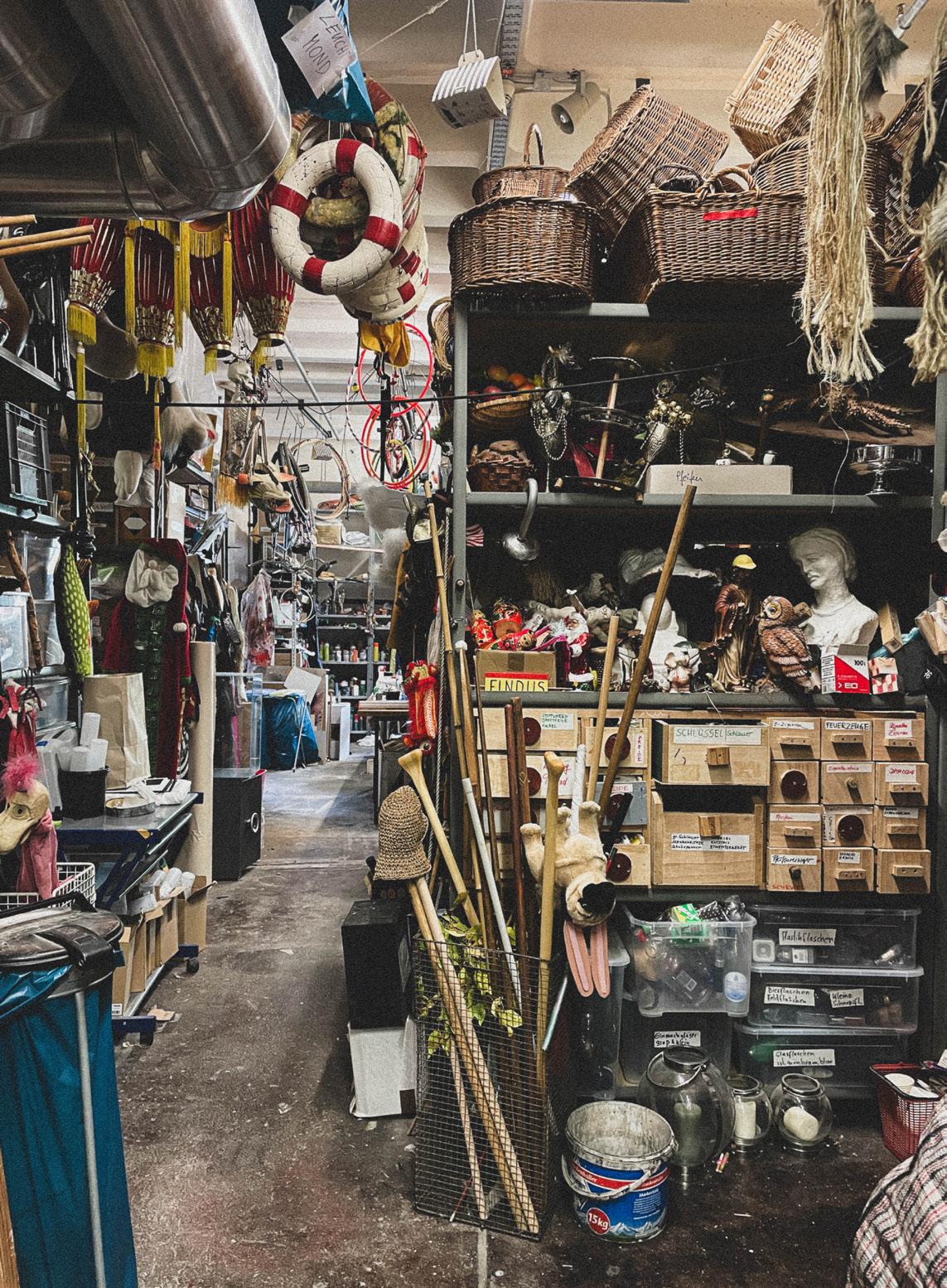







conceptual experiental, exhibition design







are the objects recognizable even in changing contexts?




This project reconsiders the dormant life of theaters during summer by transforming what already exists rather than building completely anew. It explores how the latent resources of a cultural institution—its materials, spaces, and memories—can be reactivated to create a collective and participatory experience.
Inspired by the storage of the Mecklenburgisches Staatstheater in Schwerin, the proposal opens this hidden backstage world to the public. The theater’s stored objects, belonging to a publicly funded archive, become catalysts for interaction. Visitors are invited to select and reposition these objects within a newly constructed temporary space, turning spectators into curators and performers. As the storage empties and the

new space fills, an evolving public performance unfolds—one shaped by memory, intuition, and collective imagination.
Through this participatory process in temporary interventions, the project challenges conventional theater typologies and the separation between audience and performer. It reconsiders where theatricality truly lies—within architecture, performance, or our emotional connection to objects. The resulting spatial intervention not only reactivates the theater during its off-season but also provides the institution with a renewed record of its material archive, revealing new ways of experiencing belonging, memory, and imagination through the material traces of past performances.
turning the storage into an archive with the interaction of the public

Greeted by someone at the entrance, you can buy the ticket to perform
Leave everything that you have in a box and into the closet space
You will get a ticket or number for the “stuff” that you leave behind. Phones are allowed
ACT II
Storage room
Guided by an “actor” you are taken into the storage Pick 3 objects based on intuition and memory
A careful thoughtful selection. One is allowed to collect as many pieces as they want and move them to the preceding, lay them out on the tables and think about which object makes more sense to be moved forward; however, only 3 objects pass through in the other room
An “actor” stands in front of the entrance of the other room and makes sure to hold the line for each person passes through individually to the next space
ACT III
Interrogation
What objects did you pick? Why did you pick them?
An “actor” sitting on a table will take notes on the selected objects
A few questions regarding the objects might be asked
You will be given a label, which you can possibly use on the next spaces
The “actor” notes down the objects, describing physical qualities regarding them. This list will then after serve the theatre to know the number and type of objects exist in the storage
After this is done, one is guided to proceed to the waiting room.
ACT IV
Waiting room
A space with 12 chairs, an “actor” is there to guide you when it is time to move on to the next space
One sits with the objects, possibly contemplating about the questions asked in the previous room
When the other room is ready, one is allowed to proceed
ACT V
Preparation room
Here “actors” prepare you for the “stage”
A makeup setting? Mirrors and windows to the outside
One is one step before walking on “stage” and the “actors” might touch up with makeup to prepare you
After this, one is guided to proceed, through the curtains, into the other space
This space is merely there to anticipate the feeling prior to the performance
The “actors” guide you to use the object in some way, hold in a certain way, make it a part of you.
ACT VI
The Awaiting Exhibition
One enters into a bright, white, clean, empty space
There are certain structures on the ground, certain patterns, hanging wires
The 3 picked objects are to be placed wherever in the space
If one wants to add a label, it is possible to leave it in a close distance to the object, or on the object
The space is slowly filled with the objects coming from the archive
There are people coming in to an exhibition that fills in daily
An “actor” guides the opening to the preparation room, to make sure that people only come from there but not to there
ACT VII
Exit
Once the objects are placed somewhere, one can proceed outside, and back to the entrance to collect the left “stuff” there. A café to recollect thoughts and memories, could be good on the way out.




SUPER RESOURCES


At the crossroads of Neukölln, Kreuzberg, and Treptow, Puzzle EDU reimagines two adjacent supermarkets as an inclusive space for learning and social exchange in an area lacking communal infrastructure. The project introduces a new library, co-living units, and a multi-purpose hall, creating opportunities for interaction and integration—particularly for the homeless community inhabiting the site.

Through strategic additions and transformations, the project integrates heterogeneous elements while maintaining the neighborhood’s diversity. Clear hierarchies and functions emerge, blending old and new architectural layers to demonstrate how existing structures can be reinterpreted to form dynamic urban and social spaces.
By emphasizing integration, adaptability, and future transformation, Puzzle EDU envisions a new type of urban library—open, flexible, and rooted in community life—showing how architecture can foster learning and public engagement without erasing what already exists.

a supermarket
b cafe/restaurant
c multi-purpose
d bike repair
e technical
f workshops
g library
h kids world
i administration
j collective living




multi-storey timber construction dense living modularity

This project originated from a critical examination of conventional floor plans and an exploration of typological and spatial sustainability. It aims to reinterpret existing living models and envision how they might evolve in response to social change.
The main concept focuses on rethinking traditional layouts to create adaptable and future-oriented forms of living. Diverse residential units are organized around shared common areas within dense floor plans. Varying ceiling heights introduce spatial diversity and openness within this density. A clear gradient from public to private
space defines the design: public zones are flexible and reconfigurable, while private areas are tailored to essential living functions.
The building structure uses a timber skeleton system based on a simple, repeating 5×5 meter module that allows multiple spatial combinations. The timber frame rests on a concrete foundation and ground floor, while the brick façade visually connects the project to the surrounding industrial context.
The design envisions denser forms of living that foster a stronger culture of sharing—reflecting a likely direction for future housing.



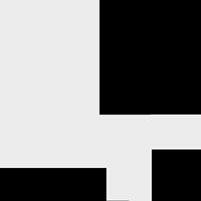



































































A city is made of a repetition of single elements. In one part of the city a combination of some elements creates one image, a different combination on the other side creates a completely different one. The complexities of different situations make up the city as a whole.
In this project, I identified some elements of my home city Prishtina, Kosovo, and turned them into stamps. The sketch illustration was turned into a 3D model, then 3D printed into a soft rubber piece and then made into a stamp. The stamps were used to create cards of 22.5 x 11.5 cm
dimension and named and numbered on the back, in order to be laid out and create one whole image.
The project is a growing one as I continously identify more pieces of my city and read more complex urban situations that need to be brought up into view.
The project was exhibited in Galerie Hinter dem Rathaus, Wismar as part of the DIA annual exhibition of Hochschule Wismar (June, 2024).

ABCtract Invisibles was created as part of the illustration course “Unsichtbar Sichtbar” (Invisible Visible), which explored ways of making the unseen visible.
The project consists of 28 illustrations—one for each letter of the alphabet— each depicting something that is typically invisible to us. The result is a 9×9 cm booklet, reproduced through screen printing, that concludes with a poem connecting all 28 illustrated invisibles into a single narrative.

Anxiety in Belonging the Consequence of a Dream, Echoing a Feeling, of Growth and Hope. Interconnectedness or Judgement this Knowledge for Life, a Melancholy that Nerves, just Overwhelmed by a Poem.
these Quantum Roots, the Systems we (don’t) Trust the Unconscious Vibes. a Whole X-perience, just like Yesterday’s Zillions.
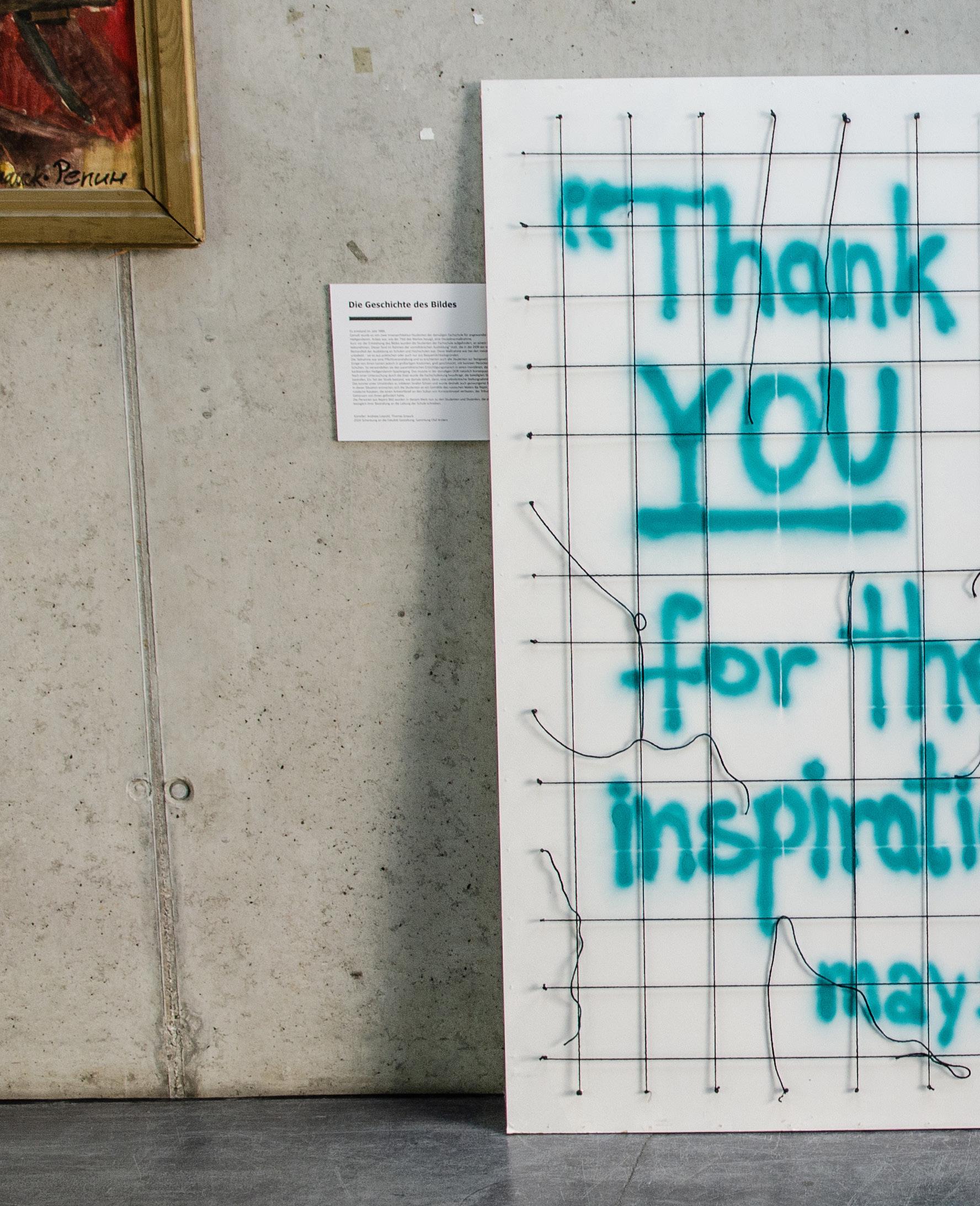
This artwork highlights the ever-so-frequent issue of the mis-/dis-attribution of women’s work. It emerged from the frustration of being given the role of a mere muse, rather than being recognized as the true source of creative ideas. Tired of being an inspiration, I thank the men who keep taking ownership of ideas, even those that are not sourced from within but from their so-called “inspiration”.
Born from personal grievance, this ironic thank you invites you to reconsider the narratives of credit and creativity in your lives, and to acknowledge the often- overlooked contributions of women.
He, Him, His, He, Him, His – for years, you’ve been my MALE-factor. Now, I’ve just made you my muse. Is it inspiring?

